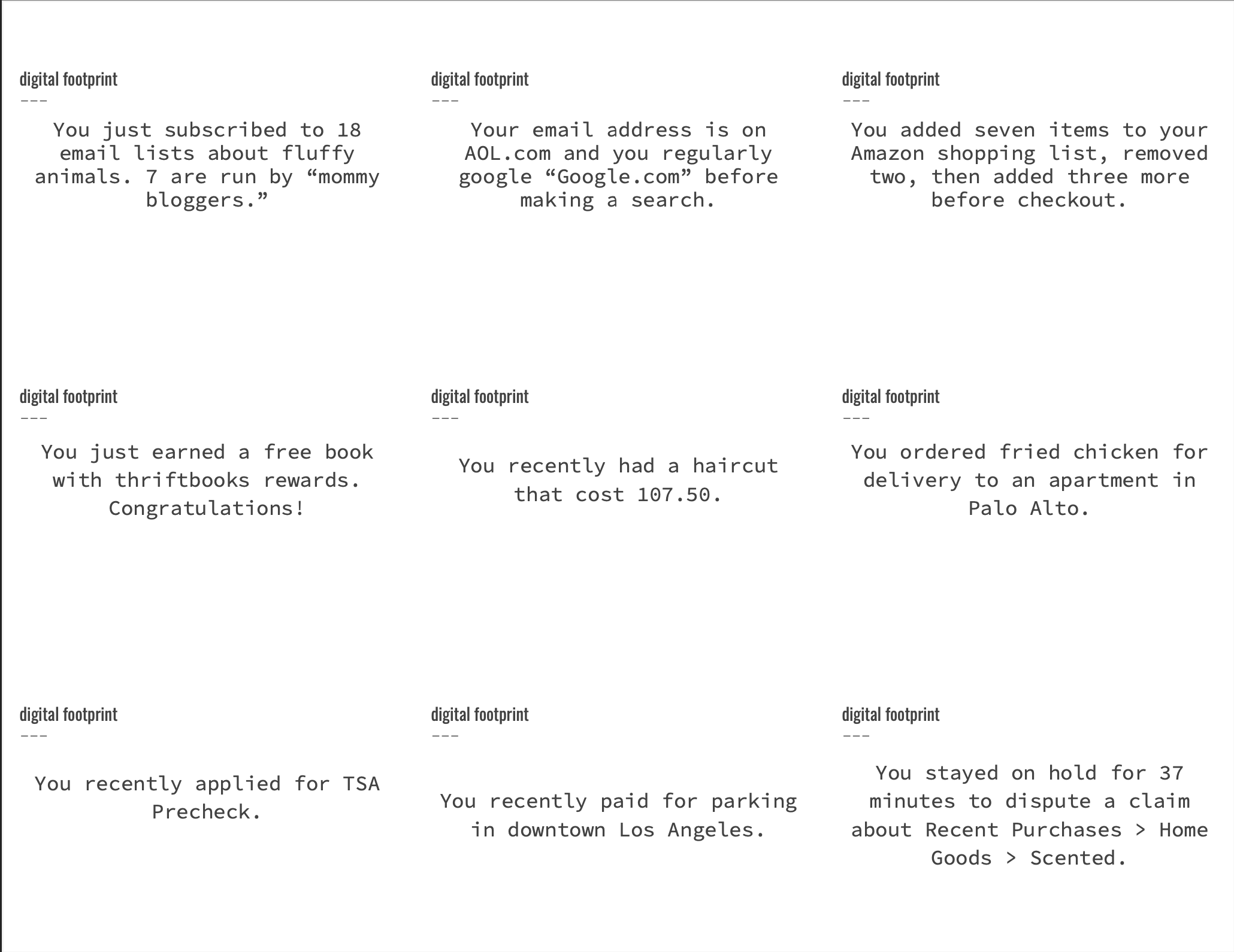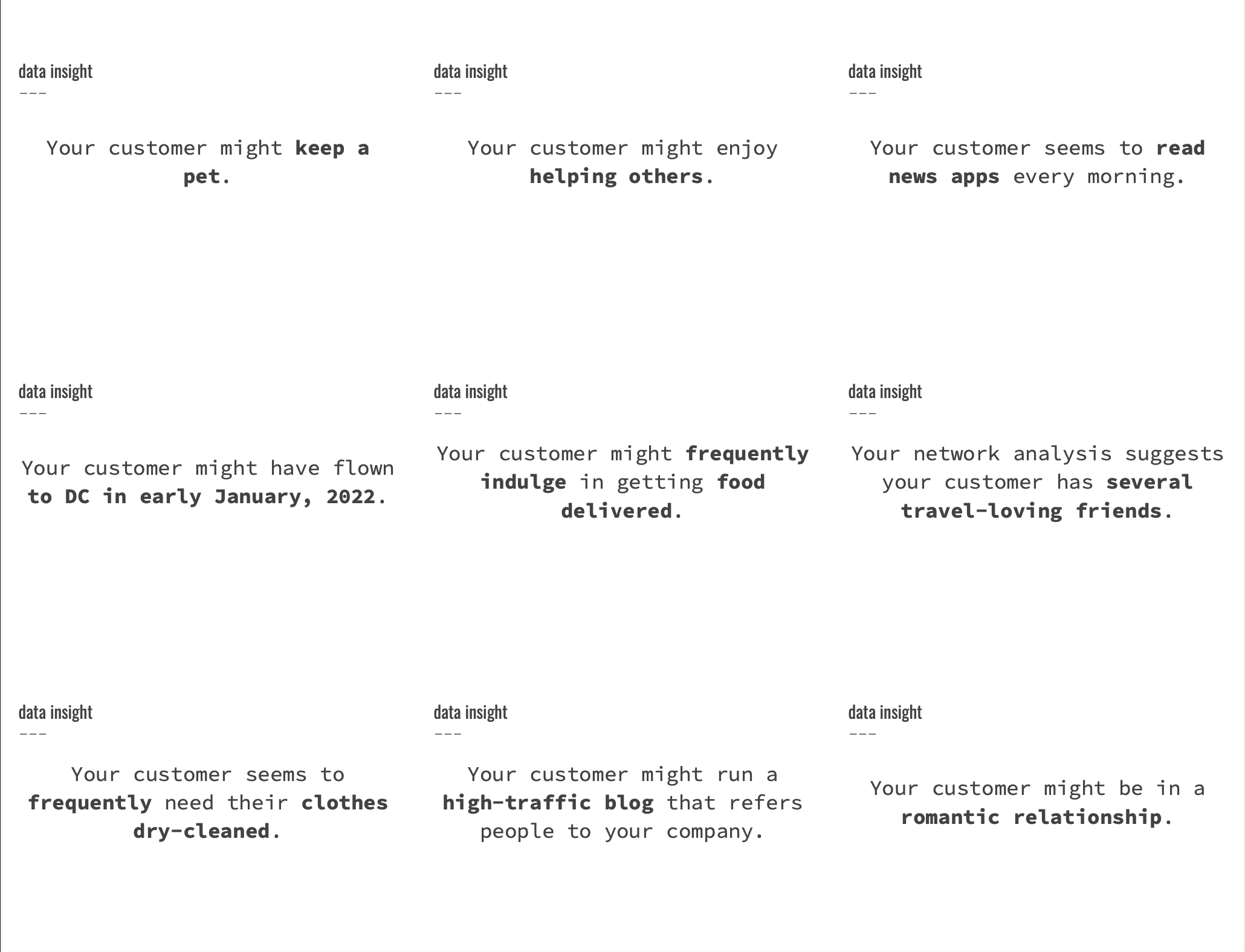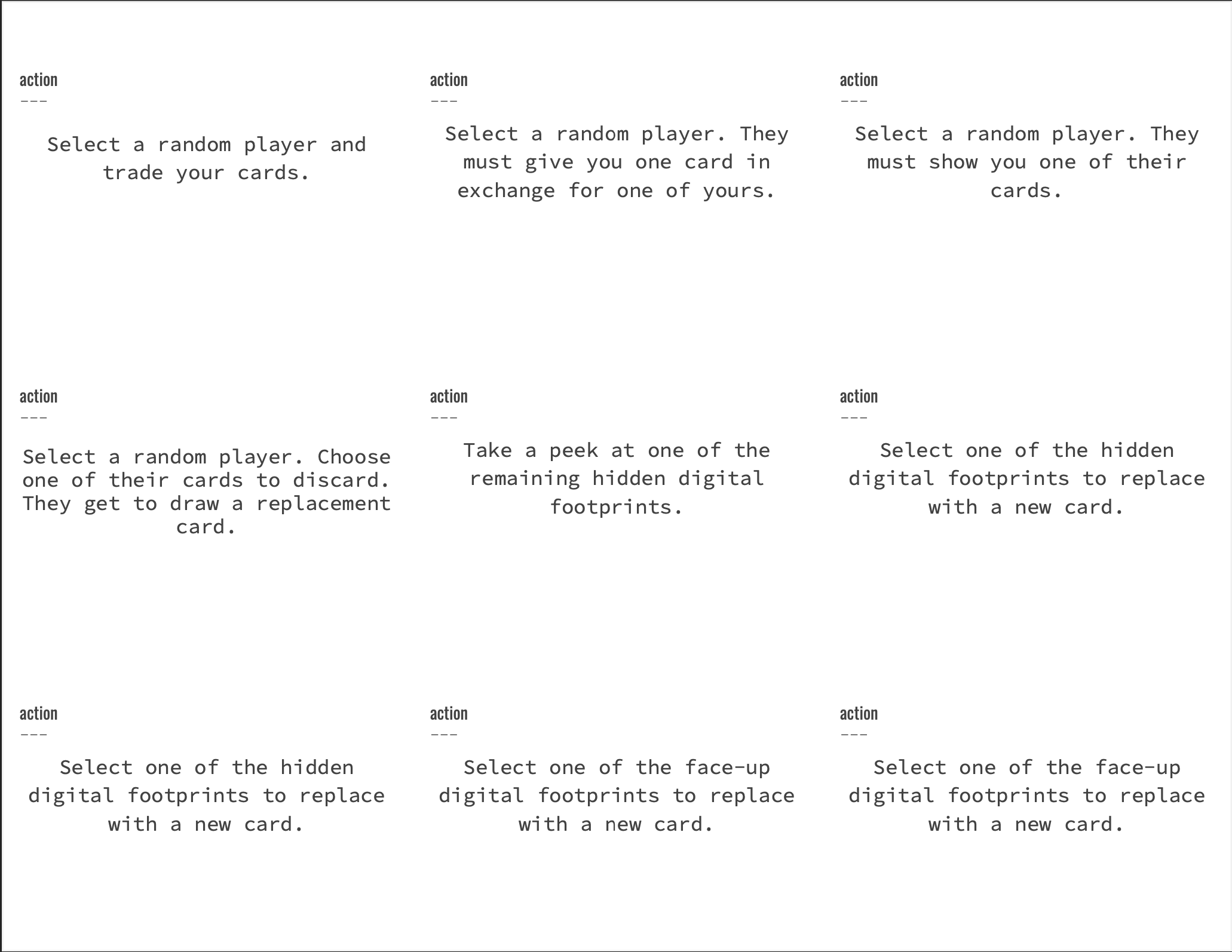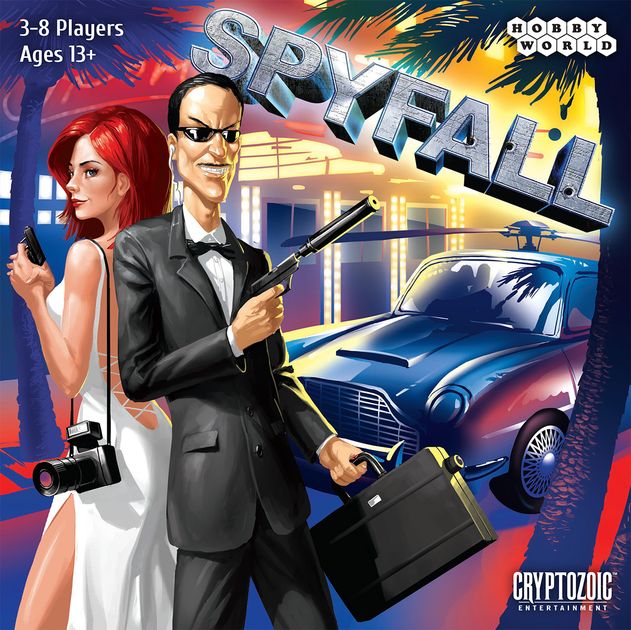Group members: Shana Hadi, Charlotte Feng, Nick Feffer
persona predictions (working title) is a competitive social game (3-5 players) that teaches how corporations use customer digital footprints to construct personas for more accurate targeted advertisements, contributing to what Shoshana Zuboff calls “surveillance capitalism.” Players take turns as corporations gathering data insights on a customer based on their digital activity, with the goal of getting a hand that is useful enough to pitch targeted advertisements to the “customer” judge player, who decides who will win the round’s point.
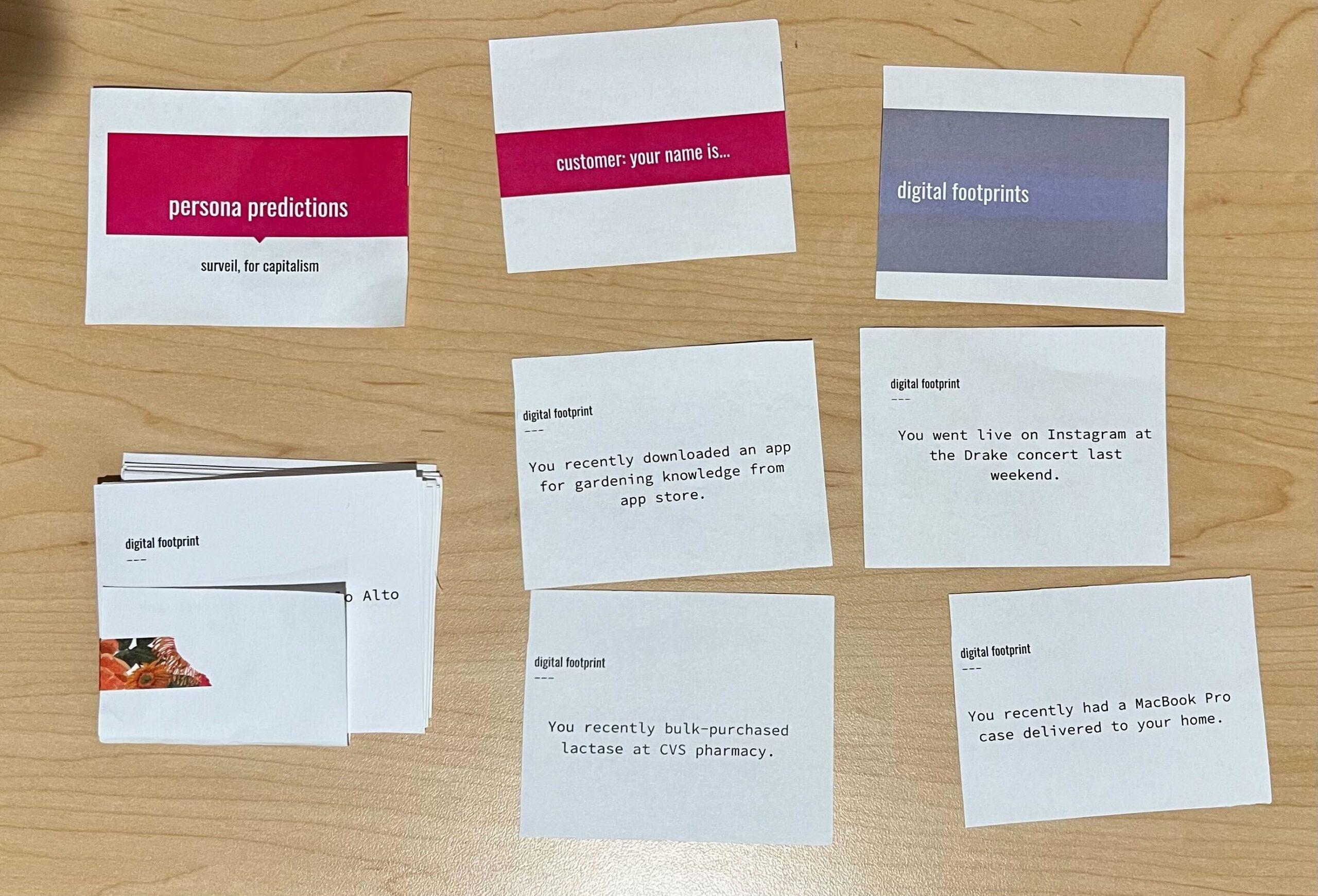
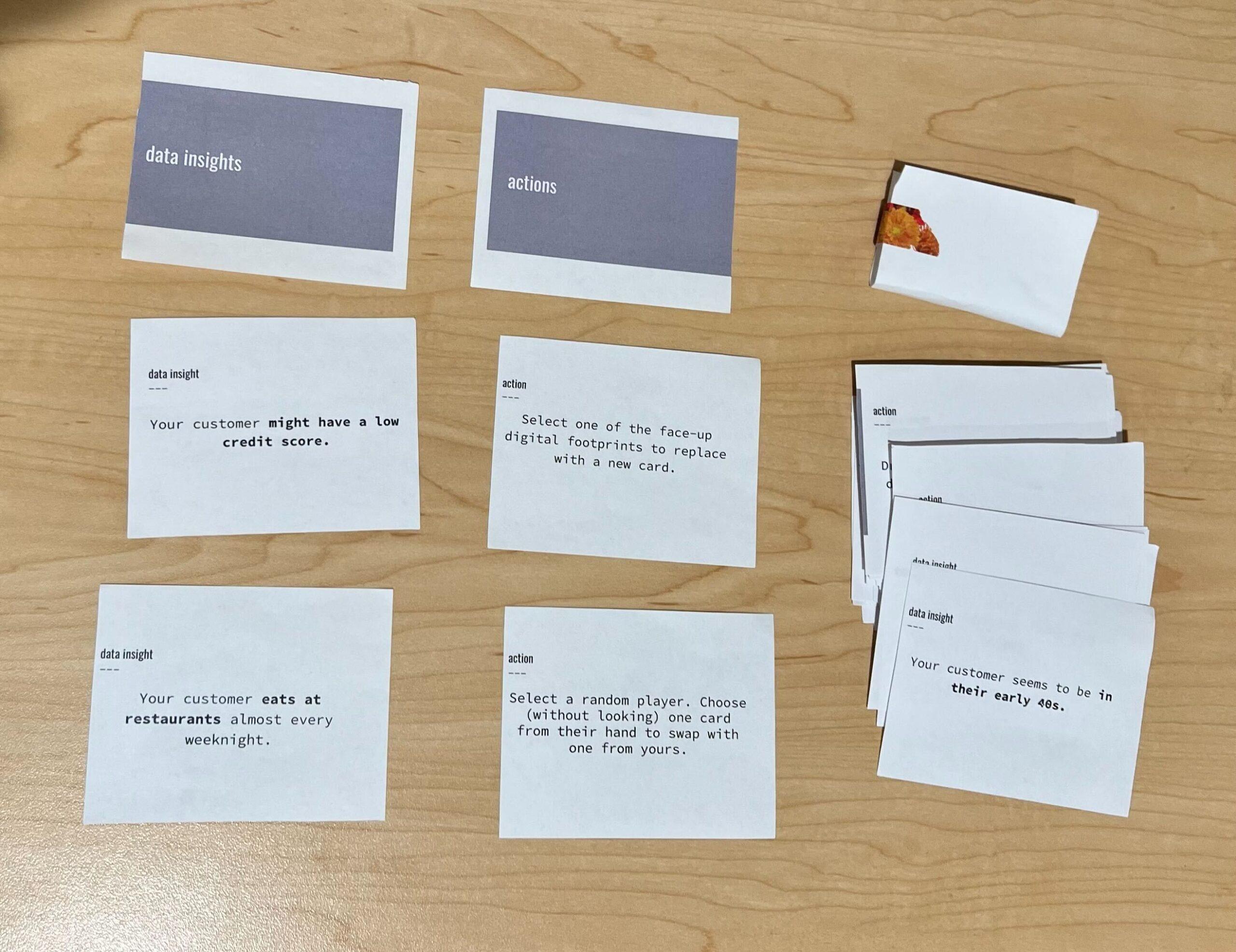
Learning outcomes
- Awareness of how corporations use your digital data to predict your future purchases
- Practice making accurate predictions from digital footprints
- Knowledge of potential sources of user data
Current Rules (2B playtest)
Materials
- customer digital footprint cards
- data insights cards
- action cards
Set-up
- 1 player is the customer “judge” of this round. Draw 5 cards from the digital footprints deck. Leave 3 face up, and keep 2 hidden.
- The other 2-4 players begin with a hand of 5 cards from the data insights / action card deck.
Procedure
- One round lasts 5 turns (each player has drawn a card 5 times).
- Per turn, draw one card from the data insights / action card deck.
- If you have any action cards, you may use up to one per turn.
- You must have at most 5 cards at any given time. If you draw 1 and decide not to use it, you must discard one card.
End-round
- After one round (5 turns), each player selects a maximum of 3 “data insights” cards and leaves them face up. After 30 seconds, each player will pitch their targeted advertisement to the
- The customer “judge” will decide which advertisement is the most accurate to the digital footprints and will persuade the customer. The winning advertisement gets a point.
- After this round is complete, the person on the right is the new customer judge.
- This game ends when you want it to end : )
Synthesized Observations
- There were several general questions on the card descriptions and rules (data insights, hand limitations, actions), and could benefit from a rule sheet.
- Players laughed and enjoyed the thematic digital footprints and data insights text / information, and used them to build persuasive pitches, tying well with our intended fun (expression, fellowship, narrative).
- “I have a whole story in my head”
- “They might just break up”
- Like the story telling
- Topics are interesting
- Players generated various ideas on additional ways to enhance the theme (with rebranding the action cards, such as “data breach” or “power outage”).
- Several suggestions on other relevant mechanics or types of digital footprint, such as negotiating and contracting with other agents, or drawing visual ads.
- Overall, the learning outcome was addressed, with players reporting that they “make me think about my own data usage” and “make me think about what is being viewed by the companies.”
- Players expressed a need for a designated time limit for the pitch (30 seconds), to allow for more succinct dramatic pitches.
- Players also wanted more use-cases for the action cards (especially the sabotage ones) as there was less information revealed about the other players throughout the game, which made it hard to know who to sabotage, and we want to build on their suggestion for each player to “commit” to a data insight to use each turn, until it is time to judge and they must use their public hand to pitch.
Next Changes
- Thematizing the action cards (such as “data breach” to explain the shuffling, or “cloud storage limit” for why players can only have 5 cards at once). This is not just flavortext modification, because information is the currency of the game, and we will strive to generate action cards that reflect the world model and stay relevant to the game model.
- Adding a 30-second limit to the pitches to the customer, to keep the game moving and encourage punchy succinctness in the persuasive roleplay.
- More strongly emphasizing that players can only draw a card and do at most one action card per turn to keep the pacing consistent.
- Integrating players “committing” to their data insights per turn to allow for more “public” knowledge of each player’s hand, and to make action cards (such as sabotage) more interesting. This also poses additional constraints to the advertisement pitch, which hopefully will help scaffold creative expression rather than hinder it.
- Adding more “powers” to the customer judge, such as making intentional choices on the digital footprints instead of drawing randomly. This might mean selecting their favorite 3 out of 10, and then keeping two footprints random.
Examples of the digital footprint, data insight, and action cards.
